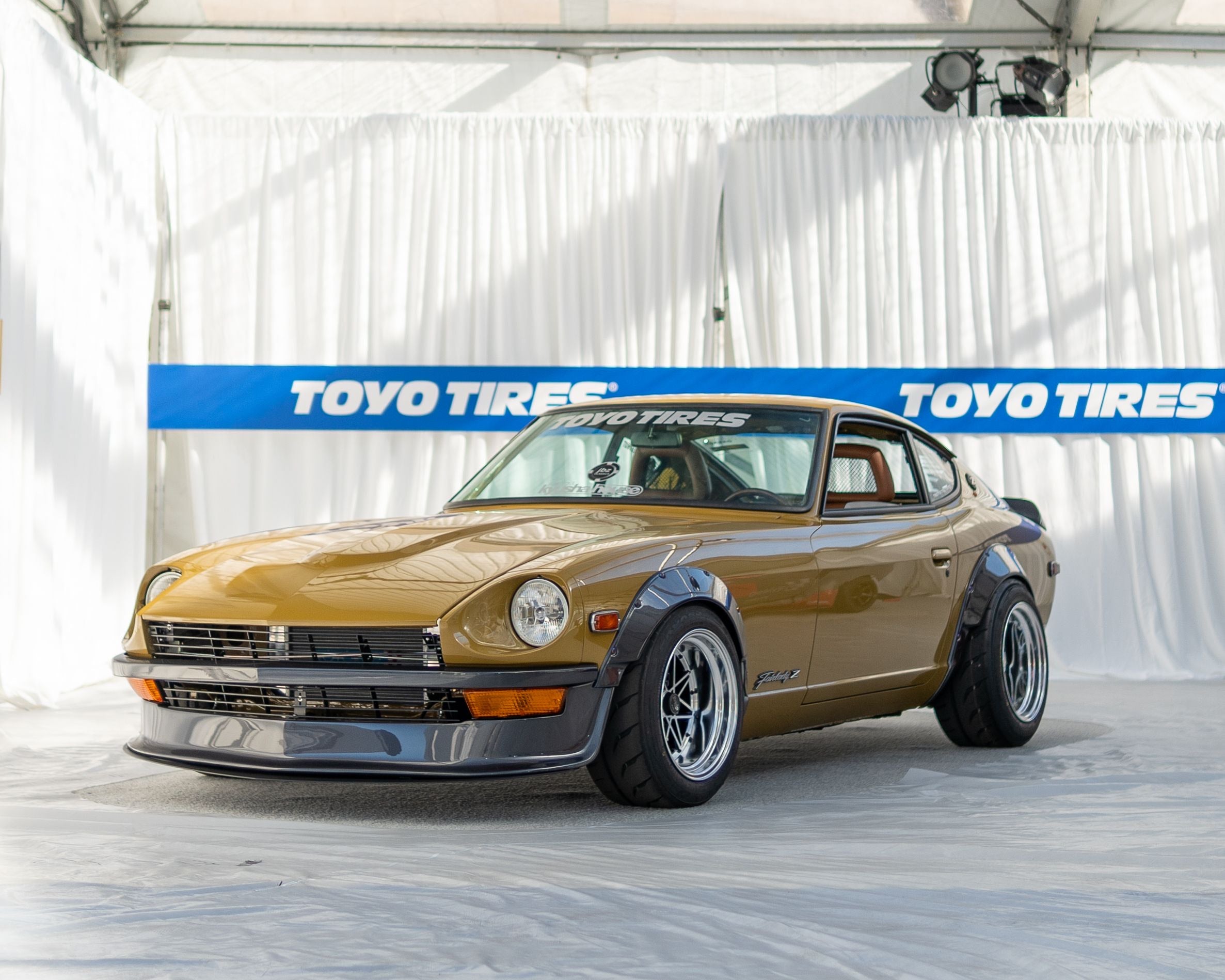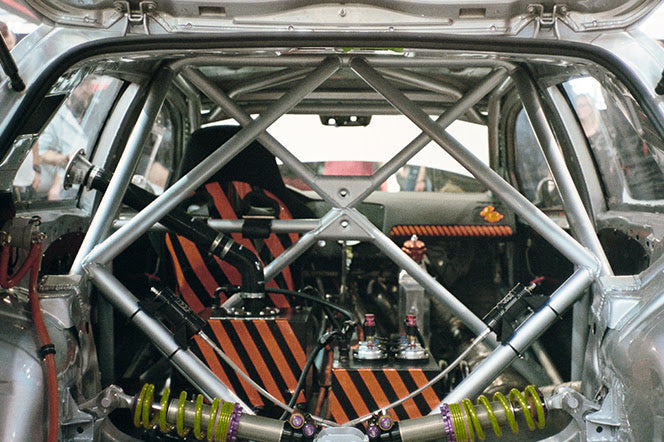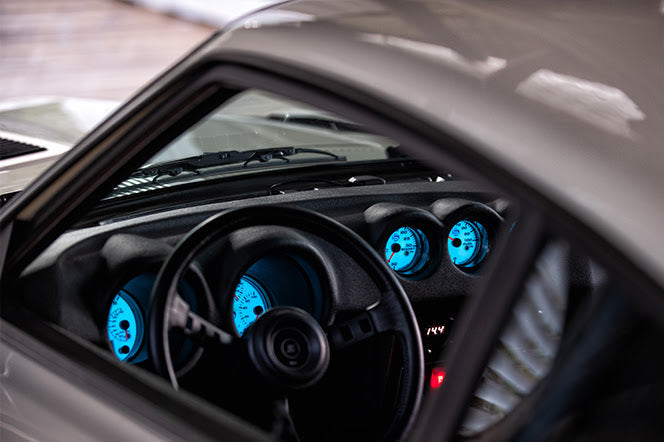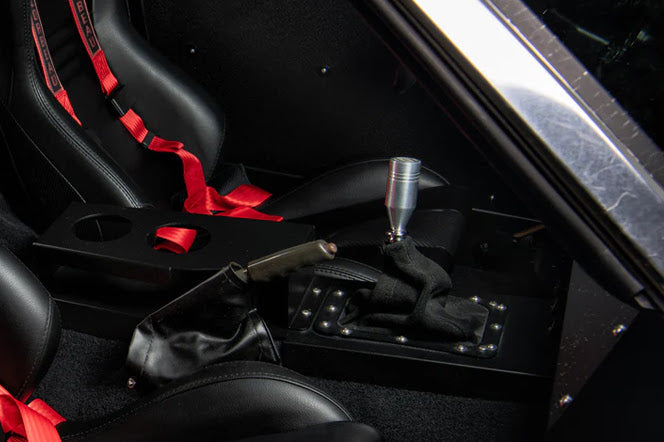Your Datsun Z can become safer and work even better with a roll cage. A roll cage strengthens the vehicle's frame when it gives a big part of the protection in crashes and also helps with stability on the road. It's a big part of older models and needs quality installation and the right choice of parts.
You can unlock the full potential of your Datsun Z with these three proven roll cage methods. From removable bolt-in cages to permanent welded options, each strategy has its own uses. Think about the installation process and the cost, as well as how much flexibility you need. These things will help you to find the right fit for your driving style. Your Datsun Z will feel unstoppable!
Let's get started!
Table of Contents
Compare Bolt-In And Weld-In Options
A roll cage can be one of the biggest safety investments you'll ever make for your Datsun Z. You can choose between bolt-in cages that'll let you switch between street and track use. These popular options usually run about $2,000 for a good 6-point setup. It's great for weekend racers who want some flexibility.
A weld-in cage can give you the ultimate protection for your Z since it can become a permanent part of the chassis structure. The welded design helps to spread out those forces evenly throughout your car's frame, too.
Race organizations like weld-in cages because they're safer than most other options. Just remember that you'll need some serious welding skills or even professional help to get one installed. Z owners pick bolt-in cages because they're an easy way to test out track life without going all-in. The setup process won't leave any long-term changes to your car, either.

No matter which cage style catches your eye, you'll still want to add racing seats and harnesses to stay better protected out there. Your driving style can help you choose which cage works best for you.
Street drivers like bolt-in cages because they're flexible for switching between cruising and track days. Track-focused Z cars can benefit from weld-in cages with the extra rigidity they give you. These permanent cages also weigh less because they don't need as much mounting hardware.
Cost shouldn't be the only factor when you're picking your cage style. While basic weld-in kits might feel cheaper, usually starting around $1,050, professional installation can add up faster. Bolt-in cages cost a little more upfront, but you'll save some money if you're good with tools and can do the work yourself.
The requirements at your local track might push you toward one cage option or another. Most wheel-to-wheel racing will need weld-in cages that meet more strict safety standards. Casual track events or autocross usually allow bolt-in setups.
The Costs For Each Option
A roll cage installation in your Datsun Z can be a bit more expensive than you might think. Just the basic steel tubes and the welding materials will run you about $700 to $800 just to get started.
Some pre-made roll cage kits might feel like a good money-saving choice. You'll end up paying anywhere from $700 to $1,200 for these kits, depending on the style and brand you pick. The shipping costs can also sneak up on you and add a few hundred dollars more to your total bill.
Professional installation can add another chunk to your budget. Most shops charge anywhere from $100 to $150 for each mounting point when they calculate their total fees.
Your average 10-point cage installation ends up costing well over $1,000 in labor by itself. You might feel tempted to cut corners with some cheaper materials or skip upgrades that make a big difference (but don't do it).

The tool requirements can catch first-time builders off guard, too. You'll end up needing some welding equipment and precise measuring tools. These extra items aren't part of any kit price, and they usually add a few hundred dollars to your project costs.
Datsun owners often start roll cage projects without doing enough homework first. One of my friends ordered a budget kit online without checking the delivery costs. He ended up paying double just for the shipping. Another friend tried DIY installation without the tools he needed, and his repair bills ended up costing what a professional installer would have charged in the first place.
High-end options like custom-fitted cages that are made from premium and tough Chromoly or Docol R8 steel push prices even higher still. These premium kits alone can cost about $1,700. After professional installation, your total investment could climb past $4,000.
How The Bolt-In Installation Works
Your Datsun Z roll cage installation should have a clean and organized workspace. You'll need to remove the front seats first by taking out the 14mm bolts and the nuts. Make sure to unplug any of the power connections that are running to those seats, too.
You'll need to strip out the interior panels behind your seats - those wires should be safely tucked away so they don't get damaged during the installation. Just grab your basic tools - a drill, some different-sized bits, and a 14mm socket set will work well. This job runs smoother with a friend around.
Temporary zip ties are a great addition here because they'll hold the cage steady while you work out the exact perfect position. You should also wrap some tape on those sharp and rough cage edges so they don't tear up your car's interior. The cage needs to be centered before you start drilling.

Take some careful measurements between the bar and the B-pillar on the sides. The cage also needs to sit flush with the roofline the way across. You should test everything out with some small pilot holes first. Use long screwdrivers to check the alignment.
Your Dremel tool comes in handy for changing any holes that aren't quite right. This part of the process deserves your full attention. The mounting parts help.
Longer bolts work best for the floor mounts, while shorter ones are a better choice for the rest. Backplates help spread out the force. You should start from the top and then work your way down.
You should take your time with every measurement to stay away from a common rookie mistake. Those brake lines and fuel lines under your car need to be well clear of any drilling places. Your seats should still be able to slide and adjust after everything's done, too.
The Benefits of a Weld-In Cage
A weld-in roll cage changes your Datsun Z's performance in ways that are sure to blow your mind. Your car's frame fuses together with the cage and can give you a strong structure that fights against twisting and flexing.
The performance will see big changes on the track after installing a weld-in cage. The changes show up best when you're pushing hard through corners at high speeds or tackling more technical sections. Your Z sticks to the ground much better and responds faster, too.
That means you'll watch those lap times drop. The welds have to be executed with good knowledge and accuracy. Every single joint needs to fit together well and get welded just right to create reliable connections throughout the cage.

Unless you're experienced as a professional welder, this probably isn't going to be a DIY job. Even small mistakes in welding could create weak areas that hurt the structure. Premium materials like quality welding rods and chromoly tubing come with higher first costs, too. But skimping on those materials now could mean failures later when you need protection. Professional installers usually spend a few full days to get everything done just right.
They'll custom-fit the cage to match your car's measurements and weld it at areas that matter the most. Every section will need some prep work and precise welding techniques to create a metal-to-metal bond.
After installation, your Z's structure can become way more rigid. This extra stiffness helps your suspension do its job better because the chassis stays firm instead of flexing. When you endure aggressive driving, your car responds the way you expect it to.
Materials And Welding
Your roll cage build needs some of the right materials to succeed. Racing enthusiasts also choose Docol R8 steel because you'll get some good strength and workability. This steel works with heavy fabrication better than some other alternatives, and it won't need heat treatment after welding.
My first roll cage build taught me a few hard lessons about 4130 chromoly steel. What looked like a strong choice, in theory, turned into a nightmare during installation. The mess I made with some rushed MIG welds took my entire weekend to fix, and I had to completely refinish that catastrophe.
Roll cage builders usually pick between MIG and TIG welding methods. MIG welding helps you to finish a bit faster and won't always punish you for small prep problems like just a bit of surface rust. TIG welding creates some prettier and stronger welds, but you'll also need more expertise and patience to get the job done.

Your tubing thickness makes the difference in cage strength. Z car builders love DOM tubing with a 1-5/8 inch diameter and a.120-inch wall thickness because you can get the right balance of structural strength without adding excess weight.
You'll learn this lesson the hard way after picking cheaper materials and then finding weaker places during safety checks. Premium steel might hurt your wallet, but you'll thank yourself later. The extra money you spend on quality steel now means better protection when you need it the most.
Modern roll cages need door bars that follow the latest SCCA rules. The installation of these bars will need some careful planning and expert welding skills. Builders frequently add rocker boxes where the cage meets the floor pan, which gives extra structural support.
Surface prep matters regardless of your welding strategy. Even small amounts of paint or oil will ruin your welds. The extra time you take to clean and prep those surfaces means you'll create some strong and steady welds throughout your entire cage.
Gaps And Reinforcements
Your Z car's safety relies on the cage bars that can hug the body lines as tightly as possible.
Your Z car's body works quite a bit like a cardboard box - the sides can flex when you try to push on them. Yet the very same box can become much stiffer once you add some snug-fitting supports on the inside. A fitted roll cage works in the same way in your Z car. Those snug bars can team up with your car's structure to build up a strong safety shield right around you.

The space between the cage and the body panels is usually just too large in most Z cars. While you do need some room to move around, those extra gaps just work against you. Your cage bars should closely trace the roof line and the A-pillars as if they were there straight from the factory. This setup helps to distribute force better if you ever flip the car.
My first 240Z cage taught me this lesson in a hard way. I left tons of extra headroom because I thought that it would feel more comfortable. Instead, those big gaps made things worse - the bars always rattled on bumpy roads. The addition of the subframe connectors and the strut bars right alongside your roll cage completely changes your Z car.
After redoing the entire cage with tighter-fitting bars, the whole car felt more planted. These kinds of reinforcements will work together with your tight-fit cage to make your chassis feel rock-solid.
You'll see the biggest changes while cornering hard or launching over at the track. Strong mounting points will make or break any roll cage installation. Your main hoop has to connect directly to the rear strut towers and the floor pan with thick reinforcement plates. This setup helps to distribute forces evenly across your chassis whenever you're pushing your car to its limits.
Build Your Dream Car
Your safety deserves the top priority when you're modifying your classic car. The DIY strategy can seem like a big step forward. But you need to get started at your skill level realistically - especially with some of the tough welding work that puts your personal safety on the line. Your welds need to hold up when it matters the most.
Professional welders will be able to put their experience, certifications, and tools to good use for you. The right protection, in this case, means the difference between walking away from an accident or not. A few of the saved dollars won't mean much if your safety gear happens to fail when you need it the most.

At Skillard, we share your deep passion for creating the perfect Datsun. That's why we have a great lineup of custom Z car parts. Our collection includes options like lightweight bumpers, tough aluminum door cards, and performance-improving spoilers. The premium parts at Skillard can help turn your automotive dreams into reality. Check out our store today!





